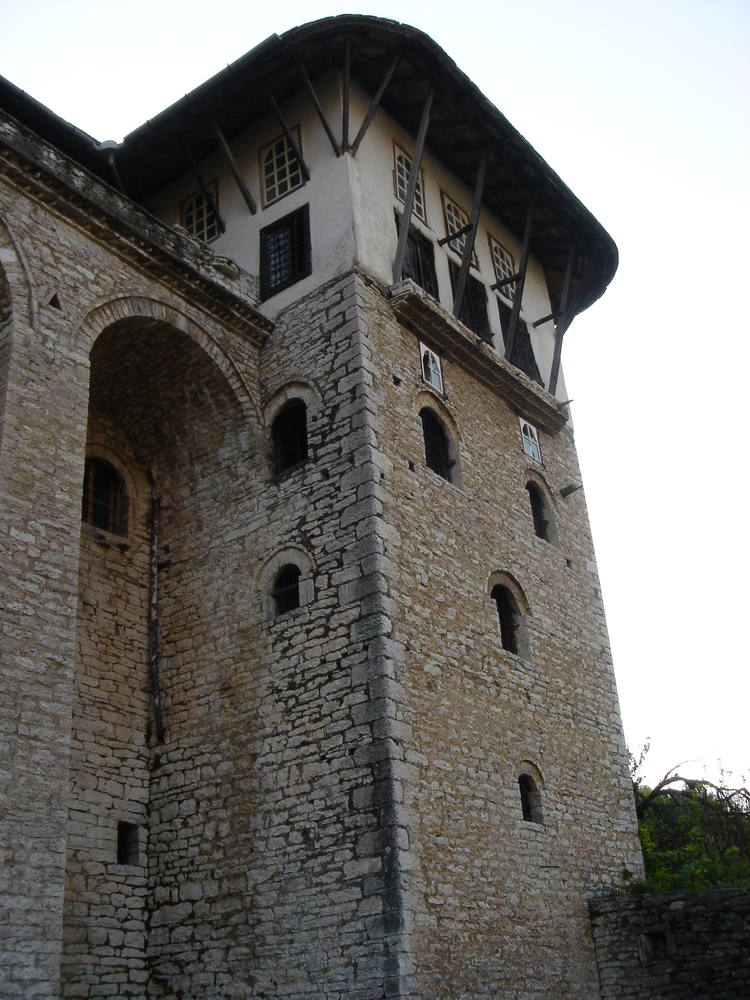培拉特與吉諾卡斯特拉歷史中心被列為奧斯曼時期典型建築特色的罕見例子。培拉特位於阿爾巴尼亞中部,見證了幾個世紀以來各種宗教和文化社區的共存。
2005年,聯合國教科文組織宣布,將安提瓜海軍造船廠及相關考古遺址收入世界文化遺產名錄。
基本介紹
- 中文名:培拉特與吉諾卡斯特拉歷史中心
- 外文名:Historic Centres of Berat and Gjirokastra
- 級別:世界文化遺產
基本概況,突出的普遍價值,標準(iii),標準(iv),英文介紹,Outstanding Universal Value,Criterion (iii),Criterion (iv),
基本概況
培拉特與吉諾卡斯特拉歷史中心被列為奧斯曼時期典型建築特色的罕見例子。培拉特位於阿爾巴尼亞中部,見證了幾個世紀以來各種宗教和文化社區的共存。它擁有一座當地稱為Kala的城堡,其中大部分建於13世紀,但其歷史可以追溯到公元前4世紀。城堡區域有許多拜占庭教堂,主要來自13世紀,以及1417年開始建造的奧斯曼帝國時期的幾座清真寺。位於阿爾巴尼亞南部Drinos河谷的吉諾卡斯特拉擁有一系列出色的兩層樓房屋。是在17世紀發展起來的。該鎮還保留了一個集市,一座18世紀的清真寺和同期的兩座教堂。
突出的普遍價值
這兩座堅固的歷史中心保存得非常完好,尤其是他們的鄉土建築。從古代到現在,它們一直有人居住。它們位於阿爾巴尼亞南部的巴爾幹半島,彼此相近,見證了該地區城市和建築遺產的豐富和多樣性。
培拉特和吉諾卡斯特拉見證了一種生活方式,這種生活方式長期受到奧斯曼時期伊斯蘭教傳統的影響,同時又融入了更多古老的影響。這種生活方式尊重正統的基督教傳統,因此能夠繼續他們的精神和文化發展,特別是在培拉特。
吉諾卡斯特拉由主要土地所有者建造。在古老的13世紀城堡周圍,該鎮擁有帶有塔樓(土耳其庫勒)的房屋,這些都是巴爾幹地區的特色。吉諾卡斯特拉(Gjirokastra)包含了幾個這類房屋的典型例子,這些房屋的歷史可以追溯到17世紀,但也有更為精緻的例子,可追溯到19世紀初。
培拉特見證了一個堅固但開放的城鎮,並且長期居住著工匠和商人。其城市中心反映了巴爾幹半島的本土住宅傳統,其中的例子主要來自18世紀末和19世紀。這種傳統已經過改編,以適應城鎮的生活方式,斜坡上的分層房屋,主要是水平布局,並充分利用進入的日光。
標準(iii)
培拉特和吉諾卡斯特對巴爾幹地區城市社會的多樣性以及今天幾乎已經消失的長期生活方式作出了傑出的見證。吉諾卡斯特拉(Gjirokastra)的城鎮規劃和住房是由著名土地所有者建造的城堡城鎮,其利益與中央政權的利益直接相關。培拉特擁有更獨立的生活方式的印記,與其手工藝和商業功能相關聯。
標準(iv)
在古典奧斯曼帝國時期,Gjirokastra和Berat兩個城鎮共同對各種類型的紀念碑和鄉土城市住房作出了傑出的見證,與之前的各種中世紀文化保持一致,並處於和平共處的狀態與基督教少數群體,特別是在培拉特。
儘管這在20世紀90年代後期受到非法建築的不利影響,但兩個城鎮的整體完整性令人滿意。真實性也令人滿意,但必須按照最高國際標準加強和謹慎實施保護管理。
管理計畫措施和最近建立的負責實施計畫的協調機構應鼓勵積極保護和保護財產的突出普遍價值政策,特別是在城市建設管理和遊客設施方面。
英文介紹
Berat and Gjirokastra are inscribed as rare examples of an architectural character typical of the Ottoman period. Located in central Albania, Berat bears witness to the coexistence of various religious and cultural communities down the centuries. It features a castle, locally known as the Kala, most of which was built in the 13th century, although its origins date back to the 4th century BC. The citadel area numbers many Byzantine churches, mainly from the 13th century, as well as several mosques built under the Ottoman era which began in 1417. Gjirokastra, in the Drinos river valley in southern Albania, features a series of outstanding two-story houses which were developed in the 17th century. The town also retains a bazaar, an 18th-century mosque and two churches of the same period.
Outstanding Universal Value
These two fortified historic centres are remarkably well preserved, and this is particularly true of their vernacular buildings. They have been continuously inhabited from ancient times down to the present day. Situated in the Balkans, in Southern Albania, and close to each other, they bear witness to the wealth and diversity of the urban and architectural heritage of this region.
Berat and Gjirokastra bear witness to a way of life which has been influenced over a long period by the traditions of Islam during the Ottoman period, while at the same time incorporating more ancient influences. This way of life has respected Orthodox Christian traditions which have thus been able to continue their spiritual and cultural development, particularly at Berat.
Gjirokastra was built by major landowners. Around the ancient 13th century citadel, the town has houses with turrets (the Turkish kule ) which are characteristic of the Balkans region. Gjirokastra contains several remarkable examples of houses of this type, which date from the 17th century, but also more elaborate examples dating from the early 19th century.
Berat bears witness to a town which was fortified but open, and was over a long period inhabited by craftsmen and merchants. Its urban centre reflects a vernacular housing tradition of the Balkans, examples of which date mainly from the late 18th and the 19th centuries. This tradition has been adapted to suit the town's life styles, with tiered houses on the slopes, which are predominantly horizontal in layout, and make abundant use of the entering daylight.
Criterion (iii)
Berat and Gjirokastra bear outstanding testimony to the diversity of urban societies in the Balkans, and to longstanding ways of life which have today almost vanished. The town planning and housing of Gjirokastra are those of a citadel town built by notable landowners whose interests were directly linked to those of the central power. Berat bears the imprint of a more independent life style, linked to its handicraft and merchant functions.
Criterion (iv)
Together, the two towns of Gjirokastra and Berat bear outstanding testimony to various types of monument and vernacular urban housing during the Classical Ottoman period, in continuity with the various Medieval cultures which preceded it, and in a state of peaceful coexistence with a large Christian minority, particularly at Berat.
The overall integrity of the two towns is satisfactory, although this was adversely affected by illegal constructions in the late 1990s. Authenticity is also satisfactory, but preservation management must be stepped up and carefully enforced, in accordance with the highest international standards.
The management plan measures and the recently established coordination authority responsible for implementing the plan should encourage an active policy of preservation and conservation of the property's Outstanding Universal Value, particularly as regards urban construction management and visitor facilities.

